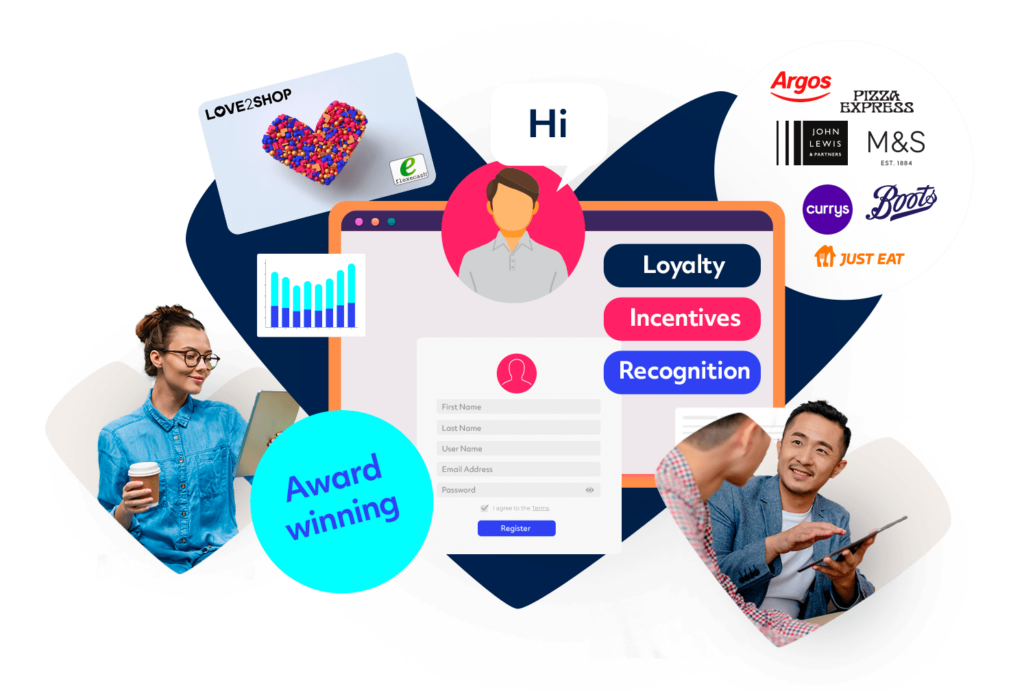Measuring employee engagement is a crucial part of understanding the level of commitment, motivation, and satisfaction of a workforce. It’s a pivotal factor in solidifying an organisation’s success.
Employee engagement metrics delve into exploring the emotional commitment, passion, and connection employees feel toward their work. This extends to how they serve the business at large.
The importance of employee engagement
In today’s complex and ever-evolving business landscape, the significance of employee engagement cannot be overstated. Beyond being a mere workplace trend, it’s a fundamental aspect that has a profound impact on an organisation’s bottom line and long-term viability. Engaged employees are not just cogs in the wheel – they’re the driving force that propels innovation, customer satisfaction, and overall growth. When employees are emotionally invested in their roles, they are more likely to proactively seek solutions, collaborate with their colleagues, and contribute ideas that can lead to breakthroughs.
A highly engaged workforce will outperform its counterparts, and also contributes to a thriving workplace culture. This is key in securing increased productivity, leading to enhanced employee retention. As a result, it’s vital to keep track of employee engagement measures. If a high level of engagement is maintained, employees are more likely to commit themselves to a company.
Why measure employee engagement?
Don’t discount measuring employee engagement as just a HR trend. It’s a strategic necessity for organisations wanting to thrive in a competitive business market. Employee engagement is the heartbeat of a workplace, resonating through every interaction and influencing outcomes. One of the most important elements in this equation is earning the trust of employees.
When employees genuinely believe that their workplace is dedicated to their well-being and growth, a powerful foundation of loyalty is established. This, in turn, creates a profound sense of commitment to their place of work, ultimately leading to elevated engagement levels. In a world where talent is the true differentiator, cultivating such engagement isn’t just an option; it’s a fundamental driver of sustained success courtesy of employee engagement measures.

The benefits of an engaged workforce
Below are some of the many benefits of an engaged workforce
- Encourages a better team dynamic: A significant majority of employers and employees, totalling 80%, acknowledge the pivotal role a united workplace community plays in nurturing effective teamwork and collaboration.
- Stronger employee loyalty: Demonstrating a strong sense of belonging corresponds to a 21% reduction in employees actively seeking new job prospects throughout 2023.
- Reduced workplace stress: Findings from a survey disclosed that 33% of respondents directly correlate workplace stress to lowered levels of engagement.
- Lower turnover of employees: Teams comprising highly engaged members showcase a remarkable decline of 59% in turnover rates compared to their less engaged counterparts.
- More productivity: Engaged employees not only signify dedication, but also drive a notable 17% increase in productivity, substantially impacting the overall success of an organisation.

How to measure employee engagement levels?
- Employee engagement surveys: create comprehensive surveys with a mix of questions. Ask employees to rate their satisfaction, commitment, and perceptions about various aspects of what their work life entails.
Whether you’re a small start-up just beginning your journey, or a global corporation with a vast workforce, understanding the nuances of employee engagement measurement holds the key to nurturing a truly thriving work environment. The contemporary business landscape recognises that engaged employees are not just more motivated, but also act as brand ambassadors for the company, contributing to its growth and success. As the importance of employee engagement gains prominence, organisations are actively seeking effective ways to evaluate and elevate their engagement levels.
Beyond the traditional employee engagement surveys, that have long been the cornerstone of this endeavour, there exists an entire spectrum of techniques designed to uncover the many facets of employee engagement. By delving into them, you’ll be empowered with the knowledge to comprehensively assess employee sentiment, and drive strategic decisions that enhance the overall work experience.
- Recognition: acknowledging the hard work of employees is essential to boosting engagement levels. Positive feedback makes them feel valued, and nudges them in the right direction.
- Pulse surveys: conduct more frequent surveys to capture real-time insights into employee sentiments, allowing you to respond promptly to emerging issues.
- One-on-one interviews: engage in individual interviews with employees, exploring their experiences, challenges, and suggestions in greater detail. This direct interaction provides valuable insights into their perspectives, fostering a more comprehensive understanding of their engagement, and championing a culture of open communication.
- Culture assessments: assess the balance between employee values, company values, and the prevailing organisational culture. This evaluative process highlights areas of alignment, or disparity, enabling targeted efforts to cultivate a workplace environment where values resonate, bringing about higher employee engagement, and a cohesive organisational ethos.
- Culture assessments: assess the balance between employee values, company values, and the prevailing organisational culture. This evaluative process highlights areas of alignment, or disparity, enabling targeted efforts to cultivate a workplace environment where values resonate, bringing about higher employee engagement, and a cohesive organisational ethos.
- Gamification: create interactive and engaging games or quizzes that assess employee knowledge, involvement, and enthusiasm about company values, products, or initiatives.
- Focus groups: gather small groups of employees from various departments to engage in open discussions about their perceptions, experiences, and ideas for improving engagement.
- 360-degree feedback: utilise assessments to collect feedback from supervisors, peers, and subordinates to provide a holistic view of an employee's engagement and performance.
- Performance metrics: analyse performance metrics, such as productivity, quality of work, and attendance, to identify any correlations between engagement levels and job performance.
- Exit interviews: when employees leave the company, conduct exit interviews to gather feedback about their reasons for leaving, which can offer insights into potential engagement-related issues.
- Behavioural observation: train managers to observe employee behaviour, interactions, and engagement indicators during daily activities to gain insights into the workforce's engagement levels.

What to do next
After measuring employee engagement, the subsequent pivotal step encompasses in-depth analysis of the collected data and the formulation of focused strategies aimed at enhancing and perpetuating elevated engagement levels.
This pivotal phase is where the empirical insights gathered from a myriad of measurement methodologies transition into actionable initiatives that drive positive change. To navigate this critical juncture effectively, consider the following comprehensive outline, which outlines the intricate path forward:
1. Analyse the results
Review the survey data and identify trends, patterns, and areas of concern. Look for both positive and negative feedback to get a well-rounded understanding of your organisation’s employee engagement.
2. Identify key insights
Determine the specific factors that are positively impacting employee engagement and those that may be contributing to disengagement. Common factors include work-life balance, growth opportunities, communication, recognition, and the relationship with supervisors.
3. Compare data
Compare the current engagement data with past surveys or industry benchmarks to understand how your organisation’s engagement levels have changed over time or how they compare with other similar companies.
4. Feedback sessions
Organise feedback sessions with employees to openly discuss the survey results. This demonstrates your commitment to addressing their concerns and involving them in the improvement process.
5. Prioritise areas for improvement
Focus on the areas with the most significant impact on engagement and where improvements are feasible. This might involve addressing specific pain points or leveraging strengths.
6. Develop an action plan
Create a clear and actionable plan outlining the steps, responsibilities, and timelines for improving employee engagement. Include both short-term and long-term strategies.
7. Involve leadership
Gain support from top-level management and leaders. Their commitment and involvement are essential for driving changes and allocating resources.
8. Communication strategy
Develop a communication plan to keep employees informed about the engagement improvement initiatives. Transparency can help build trust and enthusiasm.
9. Implement changes
Roll out the initiatives as outlined in the action plan. These can include changes to policies, procedures, communication channels, training, recognition programmes, etc.
10. Regular Check-Ins
Continuously monitor the progress of your initiatives and their impact on engagement. Regularly scheduled check-ins can help you stay on track and make adjustments as needed.
11. Measure Again
Conduct follow-up engagement surveys at regular intervals (e.g. annually or biannually) to track progress. This allows you to assess the effectiveness of your strategies and make further improvements.
12. Recognise and Reward
Acknowledge and celebrate improvements in engagement. Recognise both individual and team efforts that contribute to creating a positive work environment.
13. Continuous Improvement
Employee engagement is an ongoing process. Use the insights from each survey to continue refining your strategies and fostering a culture of engagement.
14. Adapt and innovate
Stay open to new ideas and trends in employee engagement. As the workforce evolves, your engagement strategies may need to adapt as well.
15. Seek Professional Guidance
If your organisation is facing particularly challenging engagement issues, consider seeking assistance from HR consultants or specialists in organisational development.
At highstreetvouchers.com, we are committed to aiding businesses such as yours in cultivating a motivated and content workforce. Commence the implementation of these recognition ideas today and observe the affirmative influence they exert on your employees and your organisation at large. Through investing in a employee engagement platform, you will be supporting the well-being of your employees and acknowledging their endeavours, you are establishing the bedrock for a more promising and triumphant future for your company. Here’s to successful recognition.
Love2shop Engagement Platform



